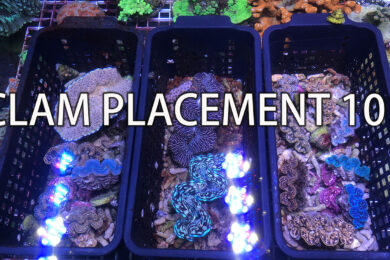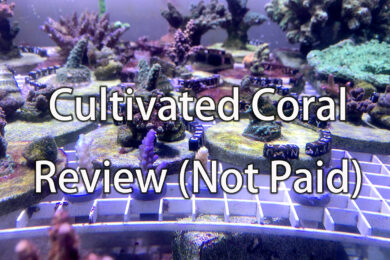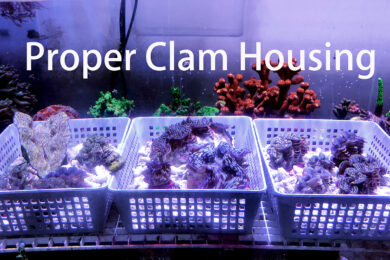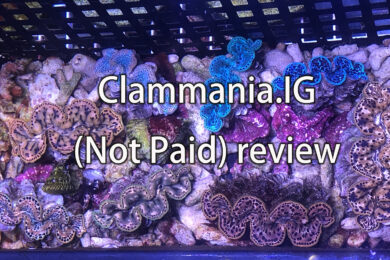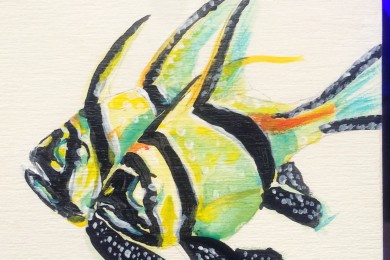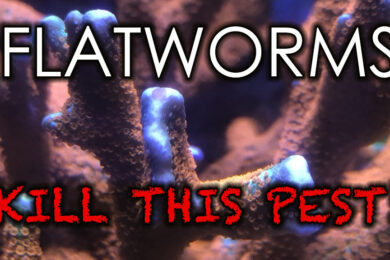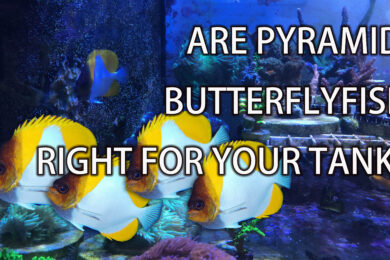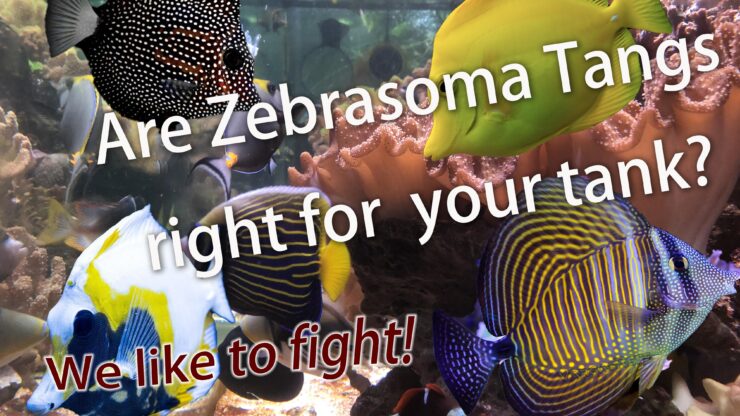Hello Everyone, Steven here. Thank you so much for joining me for another reef tank discussion. Please help support my effort by liking this video and click the subscribe button. I look forward to bring more interesting topics to the table to discuss. If you wish to read, rather than watch the video, please keep scrolling~
Our topic today is whether or not a surgeonfish in the family of zebrasoma is right for your tank. The Zebrasoma family contains some of the hobby’s most popular fishes including the OG saltwaterfish- the yellow tang, the highly sort after (and over priced) gem tang, to the massive sailfin tang. Some of them can be kept in tanks as tight as 75 gallons for a period of time, while others will eventually require tanks no less than 300 gallons to sustain its massive size. So, which zebrasoma tangs are the right fit for your current tank?
I apologize for not able to feature video footage of each of these magnificent creatures. I currently own four of the zebrasoma variations, but do not have room for more. However, I assure you have had had experience with all including my local fish store days.
I have also previously wrote about mixing zebrasoma tangs, and a featured discussion on the desjardini tang. Please visit my blog to find these posts. Link can be found under my bio.
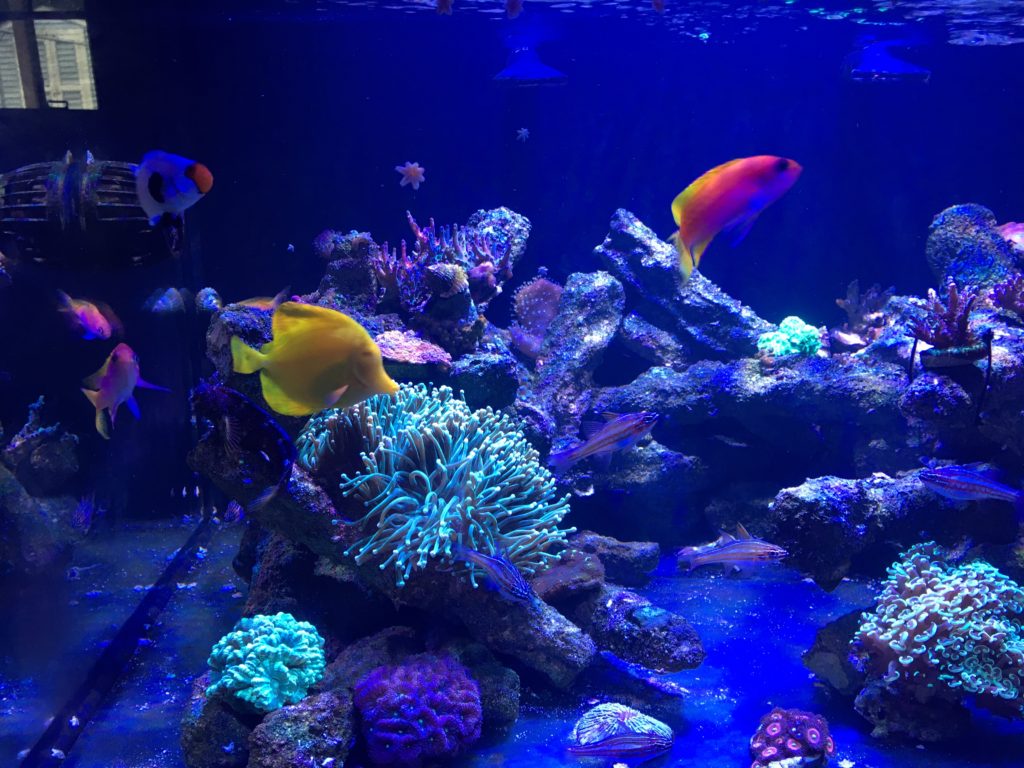
The word zebrasoma is rooted in the terrestrial animals in the horse family, including zebras of the African planes. One of the common traits all zebrasoma surgeonfish share is the elongated snout, resulting in horse-like faces. This elongated snout built is particularly advantageous in the coral reef setting where some of the algae growth is hidden behind tight crevices, or between coral branches. the only other herbivorous fish who can reach these crevices without damaging the reef structure are rabbitfish, who also have the similarly elongated snout build. So unlike tangs in the acanthurus or the ctenochaetus family who uses their wide and relatively flat mouth to graze or “mow” the lawn, members of the zebrasoma family tend to “pick” the grass like a precise trimmer.
There are currently six species of the zebrasoma tangs that are popularly known in the aquarium trade: Yellow, Scopas, Sailfin, Purple, Desjardini, and Gem. I have no doubt there are some other species out there that has not surfaced to the aquarium trade either due to quantity, appearance, or degree of difficulty in obtaining. But we will focus on these big six today.
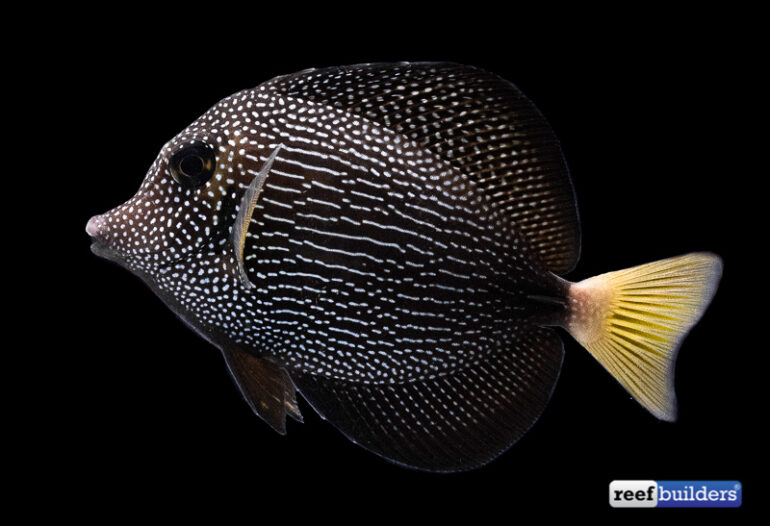
Zebrasoma Gemmatum- the Gem Tang
I pondered about leaving this to the last. But then decided that this fish deserve to be top of the list simply due to its beauty and price tag. The name gemmatum is quite straightforward- the fish is literally, a piece of gem. The price tag for this fish used to be in the four figures, but has “dropped” down to the range of $600-$900 in retail depends where you get it from.
The Gem tang originated from a limited area of the Western Indian Ocean. And along with its natural rarity, the sheer difficulty of transporting this fish making multiple stops from Western Indian Ocean to either the European or North American market is one of the biggest reasons for the significant mark up. If you see anything originates from Western Indian Ocean, you can just assume a large price tag.
Even though the fish is rare and seem precious from its pricetag, the husbandry and care for this fish can’t be simpler- Your regular reef condition on all water parameter. My gem tang came into my tank and ate like a pig from day 1. And it literally bossed around the tank and declared king since then.
The Gem tang is considered a “medium” size tang growing up to 8″ in the wild. I recommend at least a 180 gallon tank with lots of swim room and flow for a fish 3-6″, and eventually 250+ gallon for a full grown specimen.
Is this fish really worth the money? Well, I have been wanting one for the past six years ever since it was a multi-thousand dollar fish. But I did not have the financial resource to gamble on one yet. I also feared on the fish’s condition in tank having endured such long journey. But over the past few years, with better logistic improvement, technical advancement, and the fish’s growing volume in the market, the price has came down to less than half of what it originally started with. I felt comfortable enough to now enjoy the full grace of this gem in my tank. And I have not regreted a minute. It will be anyone’s pride and joy.

Zebrasoma Flavescens a.k.a. Yellow Tang
Flavescens literally means yellow in Latin. This is an unmistakable fish in the aquarium trade. Their entire body is painted with bright yellow that they dart around the tank looking like a huge golden medallion. The yellow tang is considered one of the smaller surgeon fishes in the hobby and can be housed in tanks as small as 75 gallons comfortably.
This fish is also now available with a captive raise option from Biota. Again I can’t advocate enough on captive bred fish. Not only you feel good about purchasing a sustainable option. The captive bred fish are almost guaranteed to have no parasite or disease for you to worry introduce into your tank. And lastly, they are always hardier, and readily accept prepared food than their wild caught counterparts.
One caveat with captive bred yellow tang- when they are juvenile fish, they tend not to be very “yellow”. Some may even be quite transparent. There is nothing to worry. They will gain the bright yellow color as they mature.
Yellow tangs do sometimes get a mysterious “black spot” disease. It is a flatworm parasite that isn’t as lethal as say ich or velvet, but should still be carefully managed. One of my yellow tangs used to suffer from this. But with the help of both cleaner shrimp and wrasse, I was able to eradicate the disease and keep the fish fat and robust.
Average retail price for the yellow tang has really ballooned in the past two years when State of Hawaii periodically banned the export of aquarium fish. I recall this fish used to cost in the range of 20-30 dollars just a decade ago. Now they can easily fetch $80 each, more if they are caught in Hawaii, and at a larger size.

Zebrasoma Scopas a.k.a. Scopas Tang
Scopas is a ancient Greek sculptor. The Scopas tang gets its name from the shiny scalpel like spine that is more pronounced than others due to its subdued coloration. Some may argue the scopas tang is the least attractive of all zebrasomas. I would defend them by pointing out they are like the poorman’s gem tang that they look star dust covered with a touch of brown backdrop.
Care and husbandry for scopas tang is generally the same as with yellow tang. It can live in a 75 gallon tank comfortably and should be offered lots of vegetarian diet- the nori.
Unfortunately due to the low price point and limited popularity of this fish, there isn’t a captive bred option. Most of them cost between 30-50 dollar, the same price as a yellow tang a few years ago.
BUT, this fish comes with a twist- There is an underground group of tangs called the “Koi Tang”. Basically a fish with a genetic skin deformity that causes the “aberrant” effect to it. These Aberrant (KOI) scopas tangs’ retail price are 10-20x of their “regular” part. It’s almost like finding a failed coin that worths more money. The fact is, they look really cool! This defect can actually happen in a lot of the tangs, but for some reason is especially popular among yellow and scopas tangs.

The aberrant tangs do not require any special care outside of the ordinary. But one caveat is that this morph is not guaranteed to be permanent. Depends on care, lighting, and nutrition, a fish purchased as “aberrant” may very well “heal” and become a normal color again. So if you are looking to purchase one, just know that it may be a gamble.
Zebrasoma Xanthurum a.k.a. Purple Tang
The purple tang’s name Xanthurum has a Latin root in Xanthos- meaning a previous stone of gold color. It is a bit misleading because the fish is mostly purple. But the tail sure is brightly yellow/gold. This fish is also from the Western Indian ocean, but does have a wider range of distribution than the Gem tang. Therefore even though it is more expensive than most other tangs, it is nowhere as outrageous as the gem tang.
The purple tang is also a signature aquarium stable. It is known to have one of the worst tempers among the zebrasoma tangs so if you are housing multiple of them, make sure to put them in after others.
it does grow up to 8″ so I’d recommend the same housing requirements as with the gem tang. One thing to note is the black pattern- while younger purple tangs are decorated with dark linear patterns through the boy, these lines tend to fade as they mature. Eventually you’d get a solid purple body with black freckles peppered on the face.
The Purple tangs are robust, greedy eaters so be sure to provide ample swimming space and lots of vegetarian treats.
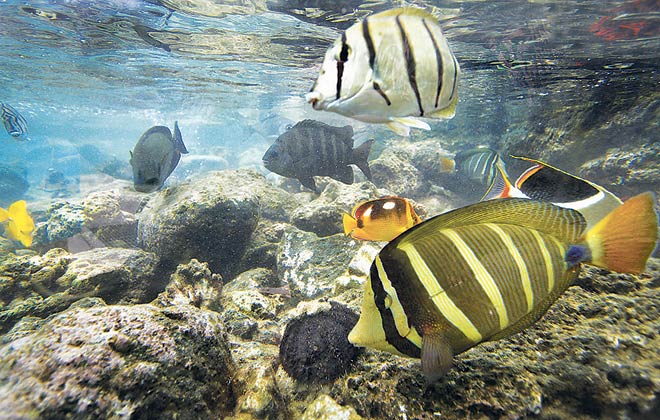
Zebrasoma Veliferum a.k.a. Sailfin Tang (Indo Pacific)
There are two species of zebrasoma fish both with the name “sailfin”. Though one of them typically dwells in the Indo-Pacific and the other in the Indian Ocean. Both are among the largest tangs, not just among zebrasoma, but among all tangs. The Sailfin tang can easily grow up to a foot and a half in the wild. Even without extending their fins, the body itself is the size of a dinner plate. This is the one tang that you will definitely need to make a lot of room for. Their care is also as easy as the others. Average retail price for this fish is between 40-100 dollars depends on size.

In my personal opinion, the Desjardini (Zebra Desjardini) is the most beautiful of all zebrasoma tangs. I believe it rivals that of a gem tang. As you can see, comparing the two sailfin tangs there is no mistake that the Desjardini tang stangs out with the pearl nose freckles and the golden vertical markings.
I am unable to find the origin of the name Desjardini. But I do believe it has an Arabic origin since this fish is commonly found in the Arabian sea, the Red sea, and the Persian Gulf. Similar to its Indo Pacific cousin, the Desjardini tang can also grow to a dinner plate size and demands respect in the tank. Average retail for this fish range from $80-$200 based on size. Is it actually most commonly available as juvenile. The marking of a juvenile fish is very different from an adult, but equally as beautiful.
So, are zebrasoma tangs the right fish for your tank? I believe they are one of the best fishes to keep in the hobby. None of them a terribly difficult to maintain, and are very good part of the clean up crew to help keep algae at bay. As long as you are prepared to make space for them in the tank, they should make good citizens in your tank. Please take extreme caution when deciding to mix them with other tangs, or others in the zebrasoma genus. They typically don’t play well with other tangs and can murder others given the chance. Unless you are very experienced and have developed a good mechanism, I would highly discourage you from mixing zebrasoma tangs.

Note: with the exception of first image at top, I have found all others online and have linked to them. Please click on the link to find due credit.
Welcome to hear your feedback and happy to answer any questions.
cheers!

